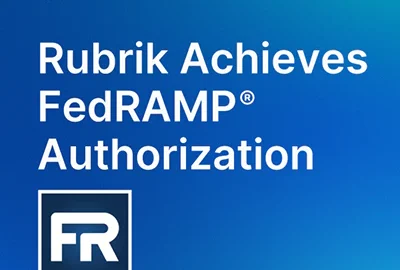Insight by Veritas
Cloud Exchange 2022: Veritas’ Rick Bryant on optimizing the shift to the cloud in healthcare
If government healthcare organizations don’t plan how they will optimize workflow and applications, the cloud can cost more than maintaining legacy environments.
“What we saw was a massive adoption of cloud services within healthcare simply because of telehealth” Rick Bryant, chief technical officer at Veritas, said during the Federal News Network Cloud Exchange 2022. “I have some customers, specifically a big customer on the West Coast, they went from 1,000 telehealth visits a month to over 100,000 telehealth visits a month overnight.”
Agencies also had to make enormous shifts in their operations, with remote work becoming the norm for many federal employees during the pandemic. Federal departments can likely learn some lessons from the healthcare industry in their use of telehealth technologies.
Value of cloud in healthcare shown by industry adoption
“We’ve seen where it can improve the continuity of care,” Bryant said. “We’ve seen where it can improve accessibility. We’ve also seen it can lower the cost of healthcare. So that’s something that I strongly encourage our government agencies to work on because it’s going to be quite an improvement.”
Providers have been able to use telehealth and automation to reduce the time and money they spend on documentation, he said.
Hospitals and other healthcare providers now want to implement electronic medical records across their systems, but building an effective system is challenging. Bryant described the challenges faced by one healthcare provider in the Northeast.
“What we found there is that it was a very difficult lift to move to the electronic medical record,” he said. “We had to move 37 other critical clinical applications that had to be adjacent to it. But once we got it there, we saw real resiliency.”
Modernizing not just moving to the cloud
Bryant also said organizations have to be careful, or they can find cloud costs are more expensive than their legacy environments. A 2021 Gartner study found organizations with little or no cloud optimization plans ended up overspending on cloud services by up to 70% when they rushed into making investments.
“To make it cost effective, you do have to look at it from a holistic enterprise solution,” Bryant said.
Many cloud native tools aren’t as mature as other applications developed in legacy environments, Bryant said, meaning some technologies can actually be expanded into multicloud environments.
“For our customers, specifically in our agencies is that have already trusted us for 10, 20, 30 years to protect their data on prem, that same technology can then be extended into the cloud, to help them achieve not only complete visibility across multiple data centers, which reduces the risk for a personally identifiable information breach or data loss, but also improves their cost model considerably,” he said. “So that’s a very important question. Moving to the cloud will improve your agility. But if you do not do it very effectively, it’s going to cost you more than what it would cost on prem.”
Check out all the sessions from the Federal News Network Cloud Exchange 2022.
Copyright © 2025 Federal News Network. All rights reserved. This website is not intended for users located within the European Economic Area.
Related Stories
Featured speakers
-

Rick Bryant
Healthcare Chief Technical Officer, Veritas
-

Justin Doubleday
Reporter, Federal News Network
Upcoming Events
Related Stories
Top Stories

Rick Bryant
Healthcare Chief Technical Officer, Veritas

Justin Doubleday
Reporter, Federal News Network






